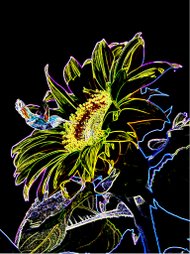What is Foliar Feeding?
Foliar Feeding is a technique for feeding plants by applying liquid fertiliser directly to their leaves. The most touted benefit of foliar fertilizers is their capacity to promote maximum nutrient absorption. This is based on the belief that foliar fertilizers cause an increase in sugar levels in plants which then stimulate soil activity and plant nutrient uptake.
In 1953, the U. S. Atomic Energy Department provided a grant and radioisotopes of all plant nutrients to Michigan State University. The objective was to study the foliar absorption of fertilizer nutrients and trace their movement in the plants. The study showed that foliar applied nutrients are absorbed by the leaves and they were even absorbed through the woody tissue of trees (bark). Amazingly, the study found that it was 8-10 times more effective to foliar feed a plant as far as the amount of nutrients required and the speed with which those nutrients were utilized.
As a result, spraying foliage with liquid nutrients can produce remarkable yields, just as spraying plants with a non selective herbicide like Roundup will kill the plants down to the roots. The leaves are a very effective transport mechanism for both nutrients and poison. Foliar feeding is especially useful in delivering nutrients that don't move from one part of the plant to another well. Phosphorous and iron are two examples of this. By foliar feeding, these nutrients are available to new growth much more quickly. Folier feeding may seem to go against long-standing garden practices of never allowing the leaves to get wet, particularly on some plants like Aferican vilotes or tomatoes. Because folier feeding is done with a fine mist and in the morning allowing leaves to dry, the benefits far outway any risks.
Other Benefits of Foliar Feeding
In addition to promoting maximum nutrient uptake, foliar fertilizers may have other benefits including the prevention of plant diseases and fungal attack. The reason is that, foliar fertilizers cover the leaves and stems, the plant parts that are susceptible to pests and parasites. Perhaps the biggest side benefit of foliar feeding is that it can increase the plants uptake of nutrients from the soil.
Feeding through the leaves works more quickly than adding fertilizer to soil which then has to be taken up through a plant's root system. Foliar feeding is not a substitute for root feeding, but used in conjunction with root feeding, foliar feeding can increase its effectiveness. By applying a foliar fertilizer directly to the leaf, it increases the activity in the leaf, at the same time increasing chlorophyll and thus photosynthesis. Because of this increased activity, it increases the need for water by the leaf. In turn this increases water uptake by the plants vascular system, which in turn increases the uptake of nutrients from the soil.
Foliar feeding is also finding favor unong many organic gardeners. Organic gardening involves cultivating naturally healthy soil. This is a gradual process which can make it difficult to provide some trace nutrients in sufficient quantity. By foliar feeding, trace nutrients can be suplemented directly, without disrupting soil development.
The Basics and Tips For Applying Foliar Fertilizers:
It is always advisable to dilute foliar fertilizer first before application. Too much concentration of foliar fertilizers may cause foliage burning. Make sure the solution is not too concentrated by spraying a few healthy leaves to see if there is any damage. If the leaves curl or look unhealthy in any way two days after spraying, dilute the mix by 50% and try again.
Make sure that the PH level of your foliar fertilizer spray is at a neutral range. If the spray is a concentrate that is mixed with water, use pH adjusted water or distilled water for making the solution.
Foliar fertilizer sprays achieve best effect by using a fine mist, allowing the liquid to drift over the plants.
Nutrient absorption of foliar fertilizers is enhanced when the air is humid and moist with a temperature of 80 degrees or below (Fahrenheit). This is due to the fact that the plants' main nutrient canals, the stomata, are open in low temperatures. The best time to spray is in the morning so the spray has time to dry.
After foliar feeding the first day, spray the plants with pH adjusted water daily for a few days. This provides the plant an opportunity to absorb any fertilizer residue.
For better nutrient absorption, make sure that your foliar fertilizer sprays reach the undersides of leaves, where the stomata are located.
Sea-based nutrient mixes, especially seaweed and alge concentrates are great for foliar feeding, because they have all the trace elements plants need in suspension and it may be harder to balance these elements within the soil.
Another good, relatively new product is vermi liquid from worm farms. It is full of different nutrients which are wonderful for foliar feeding.
To minimize runoff and help these sprays stick to the leaves, add a quarter of a teaspoon of liquid detergent to each gallon of spray.
For indoor plants, apply once a month. For flowers and vegetables outside, apply every two weeks, preferably in the mornings.
For best results, plants are often sprayed during their critical growth stages such as transplanting time, blooming time and just after fruit sets. By applying during flower set, foliar feeding may cause a dramatic increase in fruit production.
Modern Foliar Fertilizer Choices
Modern foliar fertilizers are concentrated solutions using very high grade elements, in which the nitrogen, phosphorus and potassium are combined to the desired ratio in a controlled environment. The fertilizing elements in these high tech sprays are true solutions, soluble, and thus very available to plants. To most of these commercial foliar solutions, trace elements in the form of chelates are added, along with seaweed and /or humic acid, or other additives depending on preference, to give a balanced fertilizer, supplying not only NPK, but all the trace elements as well as growth hormones and vitamins etc.
One company JTM Nutrients has developed an extensive line of foliar Fertilizers. They have specialized products for every phase of the plants life cycle from seedlings and cuttings to leaf growth and flowering and fruiting. They have a product to do the job. The following is a list of other foliar spray products that can be found with a simple internet search on their name:
Vita Grow Thunder Bloom Foliar Spray.
B'Cuzz Foliar Spray
Bill's Perfect Fertilizer
DNF Enhance
Dutch Master Penetrator
Earth Juice Essential
Spray-N-Grow
Sea Rich
GreenSense Foliar Juice
Nitrozime
General Hydroponics Chi Liquid Organic Foliar Spray
With all of these great products available, there is no excuse for not giving foliar feeding a try. It is fast, easy, relatively inexpensive and very effective.
Dr. Christopher J. Kline is a master gardener and writer living in Paradise Valley Arizona. He is an editor for The Ultimate Sunflower Site http://www.SunflowerOcity.com, a columnist for Garden and Greenhouse Magazine http://www.gardenandgreenhouse.net/ and an owner of Greenhouse and Garden Supply http://greenhouseandgardensupply.com/.
You can reach Chris at CKline72@Cox.net
Subscribe to:
Post Comments (Atom)



No comments:
Post a Comment